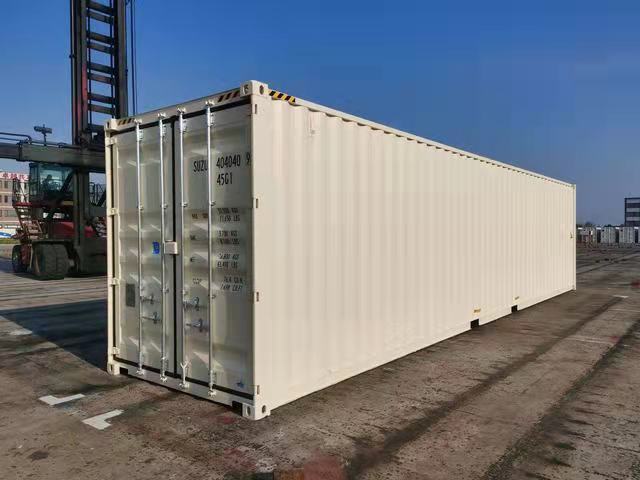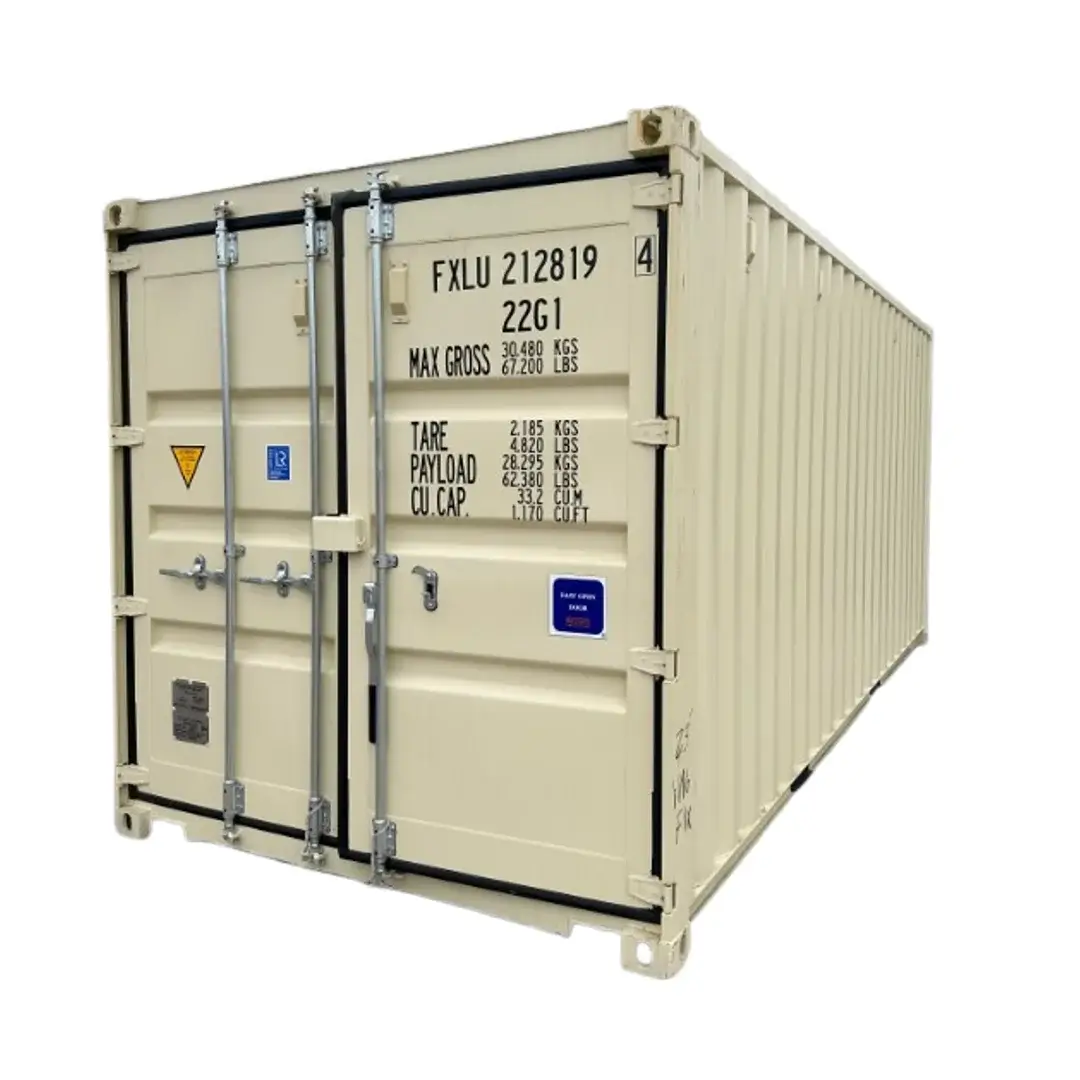The Ultimate Guide to Selecting the Right Delivery Container for Your Demands
When it concerns choosing the appropriate delivery container, understanding your particular demands is important. You'll desire to consider aspects like dimension, type, and product to assure you make the very best choice. From standard dimensions to specialized choices, there's a lot to explore. And also, budgeting for both the container and any type of adjustments can make a big distinction. Let's damage down the key facets to aid you locate the best suitable for your needs.
Understanding Delivery Container Sizes
When you're selecting a shipping container, recognizing the various sizes offered is vital for making the appropriate decision. Delivering containers commonly come in typical sizes of 20 and 40 feet, but you'll also discover other measurements. Recognizing the dimension you require depends on what you intend to shop or transport.If you're relocating smaller sized things, a 20-foot container may be optimal, while bigger shipments usually need a 40-foot container. The elevation can also differ; high dice containers offer added upright room, which can be useful for taller goods.Before making a decision, determine your cargo, and take into consideration how much area you'll require for filling and dumping. Constantly consider prospective future demands-- selecting a somewhat larger container might save you trouble down the line. Ultimately, picking the ideal size will certainly improve efficiency and ensure your items are secure throughout transportation
Sorts Of Delivery Containers Available
There are numerous types of delivery containers readily available, each created for particular functions and cargo demands. The common completely dry container is versatile, best for general cargo. If you're delivering perishable items, consider a chilled container, which preserves a regulated temperature level. For oversized items, high dice containers provide additional height, fitting taller loads.If you require to transport hefty machinery or tools, flat shelf containers offer a tough base without wall surfaces. On the other hand, open-top containers permit very easy loading of tall freight, with a removable tarpaulin covering for security. If you're trying to find versatility, think about a retractable container that can be quickly stored when not in use.Lastly, specialized containers like tank containers are made use of for liquids, while vented containers are designed for bulk cargo that requires air flow. Recognizing your freight kind will assist you select the appropriate container to meet your shipping requires effectively.
Product Factors To Consider for Longevity
When picking a shipping container, the product plays a crucial function in its toughness. You'll intend to evaluate the benefits of steel versus aluminum, especially regarding corrosion resistance. Comprehending these factors can aid you make a much more enlightened choice for your delivery needs.
Steel vs. Aluminum Containers
Just how do you choose in between steel and aluminum containers for your shipping needs? Begin by thinking about durability. Steel containers are robust and offer excellent strength, making them optimal for hefty tons and rough problems. They withstand damage from effects and are typically less pricey, which can be a significant factor for budget-conscious buyers.On the other hand, light weight aluminum containers are lightweight, which can save you on shipping expenses. They're easier to navigate and are an excellent selection if you require to carry items frequently. Nonetheless, light weight aluminum is normally more expensive and less durable than steel. Consider your certain requirements very carefully, including weight, cost, and the kind of cargo you'll be delivery, to make the right option for your circumstance.
Deterioration Resistance Factors
Selecting the best material does not just involve weight and cost; rust resistance plays a substantial duty in toughness. When selecting a shipping container, take into consideration the environment it'll deal with. Steel containers, while solid, can rust if not appropriately treated. Try to find choices with protective coatings or galvanization to enhance their life-span. Light weight aluminum, on the various other hand, supplies natural rust resistance, making it perfect for coastal locations or damp conditions. It can be extra costly. Furthermore, analyze the container's usage-- if it'll be revealed to chemicals or severe climate, focus on materials that can stand up to these problems. Buying a corrosion-resistant container now can conserve you from expensive repair work or replacements down the line. Select carefully for long-term benefits.
Adjustments and Modification Options
Delivering containers aren't just for carrying products; they can be changed to fulfill your particular requirements via numerous adjustments and modification alternatives. You can convert a typical container into a comfortable office, a short-term retail shop, or perhaps an individual fitness center. The possibilities are nearly endless.Think about adding home windows, insulation, or ventilation to improve comfort. You might likewise take into consideration electric circuitry, pipes, and even customized shelving to improve functionality. If safety and security's a problem, reinforced locks can supply peace of mind.For aesthetic allure, you can repaint the container or include a distinct style to make it stand apart. Do not forget flooring choices-- whether you want resilient plywood or something extra innovative, it can boost the space.Ultimately, customizing your delivery container to fit your needs can boost usability and develop a distinct environment that reflects your design.
Examining Your Transportation Demands
When it comes to using your customized delivery container, comprehending your transport requires is vital. Start by identifying what you'll be shipping-- whether it's heavy devices, retail products, or individual items. Each kind of freight has different demands concerning dimension, weight, and accessibility.Next, consider the distance and mode of transport. Are you shipping in your area, country wide, or globally? This affects the container's layout and capability. If you're utilizing vehicles, ensure your container fits common measurements for simple loading and unloading.Additionally, assume regarding transit problems. Will your items require unique protection from weather or temperature level fluctuations? If so, you may need insulation or air flow features in your container.Lastly, assess just how usually you'll be transporting goods. Frequent deliveries might require a more durable and flexible container to meet continuous demands. By addressing these factors, you'll be well-prepared to pick the appropriate shipping container for your demands.
Budgeting for Your Delivery Container
Establishing a More Bonuses budget plan for your delivery container is essential for making certain a smooth purchasing process. First, figure out just how much you can pay for to invest. Rates can vary significantly based on size, condition, and type. New containers commonly cost a lot more, however made use of ones can offer considerable savings.Next, consider any kind of extra costs you may sustain, such as transportation charges, delivery fees, and alterations. If you plan to tailor the container, aspect in those expenses as well. Study different suppliers to compare prices and discover the about his ideal bargain that meets your needs.Don' t fail to remember to consist of any kind of licenses or regulations that may use to your acquisition and use the container. By plainly detailing your budget plan, you'll be better prepared to make educated choices, guaranteeing you get the ideal container without damaging the bank.
Maintenance and Treatment for Longevity
To assure your delivery container lasts for several years, normal upkeep is essential. Begin by checking the exterior for rust, damages, and damage. If you find any type of problems, address them promptly to stop further damage. Tidy the container periodically, both within and out, to get rid of dirt, particles, and Related Site moisture that can result in corrosion.Ensure the doors secure properly and oil the joints to avoid rust and sticking. If you're making use of the container for storage space, think about including ventilation to lower humidity and mold and mildew growth. For added security, apply a rust-inhibiting paint or sealer annually.If your container's situated in a rough environment, like coastal locations, you could require to increase maintenance frequency. Keep an eye on the floor covering, also; any type of signs of wear must be fixed right away. With these easy steps, you'll expand the life of your shipping container substantially.
Often Asked Concerns
Exactly how Do I Locate a Trusted Delivery Container Supplier?
To find a trusted shipping container supplier, start by researching online reviews, requesting for suggestions from close friends or industry get in touches with, and comparing rates. Constantly inspect their qualifications and warranty they offer top quality containers that meet your needs.

Can I Rent a Delivery Container Rather Than Acquiring?
Yes, you can most definitely lease a shipping container rather than acquiring one. Lots of providers offer rental choices, which can conserve you money and offer flexibility if you just need it for a short duration.
What Permits Are Needed for Container Positioning?

Are Shipping Containers Weatherproof and Appropriate for Outdoor Storage Space?
Yes, shipping containers are typically weatherproof, developed to stand up to harsh problems. Their robust construction keeps your items protected and completely dry, making them suitable for exterior storage space. Simply ensure proper air flow to stop moisture buildup inside.
How Do I Transport a Shipping Container When Bought?
